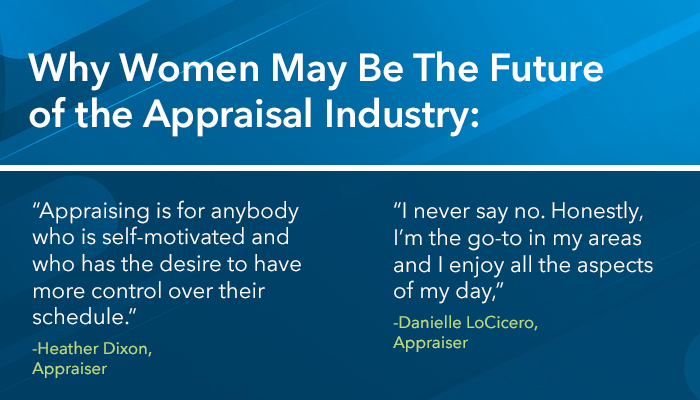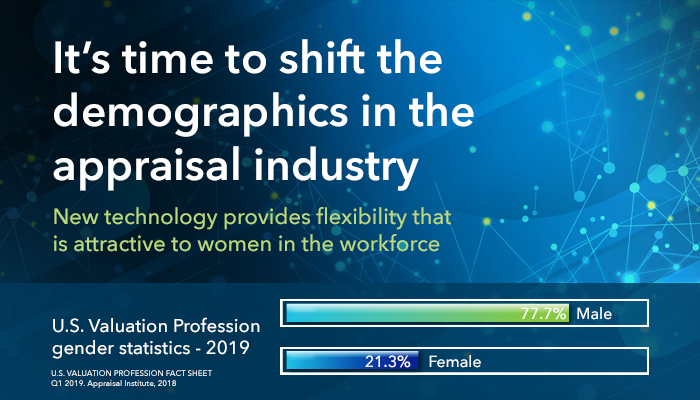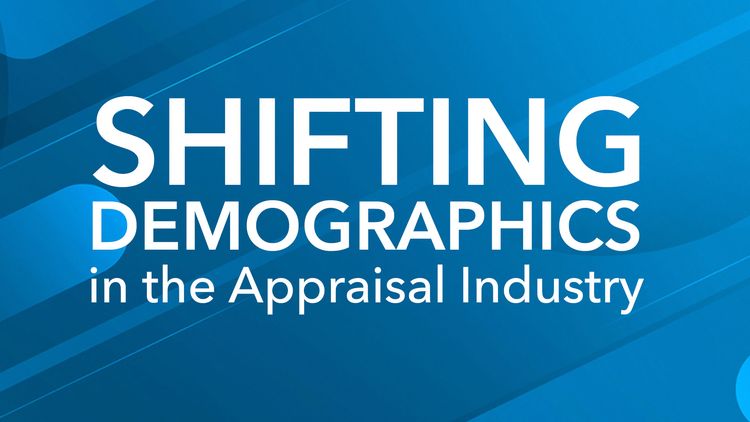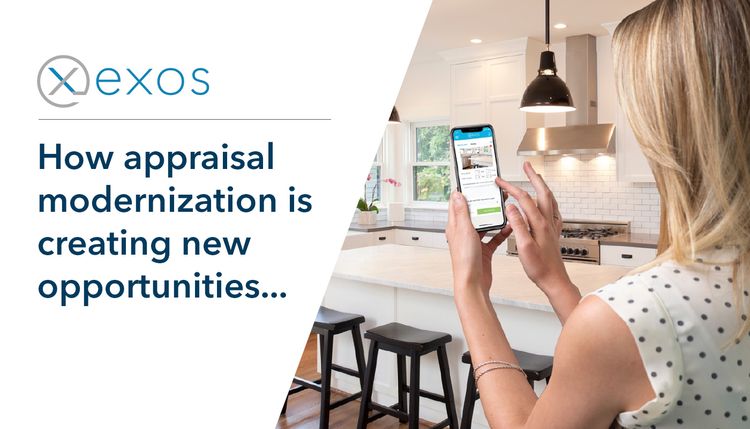In the business world, when one worker quits, gets fired or retires, a new one takes their place. Turnover is, in many cases, just a part of doing business. In order to operate at peak efficiency, many companies work to fill open positions quickly by hiring the best candidate from a group of quality applicants. While that works for most businesses, the same cannot be said for the valuations industry.
When an appraiser quits or retires, their absence adds to a growing void. There are people leaving the profession but not many entering it, making each and every departure that much more troublesome. Data from a 2019 Appraisal Institute* report shows that there are 78,000 active real estate appraisers across the country. That may sound like a healthy number, but it’s been decreasing at a rate of 2.6 percent per year for the past five years. More than half (55%) of the appraisers currently in the field have 20+ years of service and are approaching retirement age. At the other end of the spectrum, just five percent of the appraiser population is between the ages of 26 and 35, and less than one percent are younger than 25.
Hiring Hurdles
Without a rush of new appraisers entering the profession, the numbers will likely plummet even further as the veterans start retiring en masse. On the surface it seems like an easy problem to solve: hire more trainees who will then become appraisers. However, efforts to replenish the population have traditionally run into roadblocks including a lack of awareness about the profession, training requirements and government regulations. Still, some appraisers say there is real opportunity for those willing to put in the time.
“I think people are intimidated by the amount of time it takes to become proficient [in this field] even though restrictions have changed and the requirements aren’t what they used to be,” said Heather Dixon, a 20-year veteran appraiser from Columbus, Ohio. Appraising was a natural fit for Dixon who followed in her father’s footsteps and got involved in the family business in the 1980s. She started her apprenticeship right out of high school and became a licensed appraiser in her early 20s. In terms of her gender and age, “There was a level of professionalism that I knew I had to deliver,” she said. “Now I’m proud of what I do. I take a lot of pride in the fact that I really understand my market.”
Danielle LoCicero, an appraiser from New York, got her start after serving as a data entry clerk in an appraisal office. After seeing the freedom the other appraisers enjoyed, she thought it would be a perfect fit for her lifestyle and soon after started her training. LoCicero was able to build a career and name for herself, while raising her son at the same time. “When he was a baby, I used to put him in the Baby Bjorn and bring him along,” she said. Now decades later, she’s a trusted appraiser with an insatiable drive. “I never say no. Honestly, I’m the go-to in my areas and I enjoy all the aspects of my day.”

New Generation of Appraisers?
Given the well-documented need to recruit a new generation of appraisers, perhaps women are the untapped resource that could help counteract the attrition problem. Dixon, LoCicero and their counterparts make up just 21 percent of all appraisers in the U.S.(1) That number suggests there is an opportunity to reach out to a segment of the female population that is perhaps looking for work, but has never considered a career in valuations. An article in Mortgage Women Magazine put it this way, “Not only does the industry need more female appraisers, it needs more appraisers overall. Inviting more women into the profession is as much of a practical matter as it is one of fairness and equal opportunity.”
While fewer women are currently taking steps to become appraisers, there’s another closely-related profession that has seemingly cornered the market on attracting women: real estate agents. Statistics from the National Association of REALTORS shows that 67 percent of all REALTORS are females. Both professions include coursework, testing, licensing and regulations. So the question becomes, why are so many women attracted to selling real estate instead of appraising it? LoCicero says it appears many view the industry through perceived social norms, “I think there is a stigma that this is a man’s career and that it’s dirty and not for women, and that women are meant to sell.” But Dixon says traditional gender roles aside, “[Appraising] is for anybody who is self-motivated and who has the desire to have more control over their schedule.”
Technology Advancements
The addition of new technology is helping the industry provide the kind of flexibility that is attractive to today’s workforce. As pointed out in an article on recruiting younger appraisers, the writer noted, “A company with modern technology has the best chance of attracting and hanging on to next generation workers. A company with poor or outdated technology is going to struggle to bring in a younger workforce.”(2)
With advancements in AI, machine learning and data analytics, appraisers who adopt digital platforms are more connected and productive than ever. EXOS Valuations, for example, was developed to infuse technology into a traditionally offline process. Through a desktop or mobile application, EXOS allows appraisers to control their calendar in real-time, providing times and locations in which they are available and “blocking” times when they are not. Consumers or lenders are able to schedule appointments based on the appraiser’s availability, cutting out the phone tag that often adds days to the timeline. Appraisers who use EXOS have reported quicker turn times, increased efficiency and more control over their schedule. The availability of this type of technology, if used in recruitment efforts, has the potential to attract a new crop of appraisers as it fits with the digital consumption patterns of today’s generation.

Growing Opportunities
Other opportunities are available for those interested in the appraising profession- but not interested in working in the field. With the increasing demand for “hybrids,” also known as bifurcated appraisals, appraisers can utilize data collected by another professional without having to physically inspect the subject property themselves. That means appraisers who take on these assignments gain a level of convenience by being able to complete the valuation from the comfort of their home or office. In terms of balancing a work life and home life, Dixon says being an appraiser has afforded her the chance to be successful in both areas, “I stop at a certain point of the day, handle what I need to handle, put my kids to bed than get out my laptop and do what I need to do.”
So, whether it includes breaking down stereotypes or educating the public about this viable career option, the valuations industry is full of opportunities. If more efforts are made to target both the aforementioned demographics, there’s a chance that the ranks of licensed appraisers in the U.S. can grow instead of decline.
*Source: Appraisal Institute
(1) Appraisal Institute: US Valuation Profession Fact Sheet 2019
(2) Mortgage Women Magazine: Why Are There So Few Female Appraisers, 2019
(3) https://www.propmodo.com/why-isnt-the-real-estate-appraisal-industry-attracting-young-professionals/


